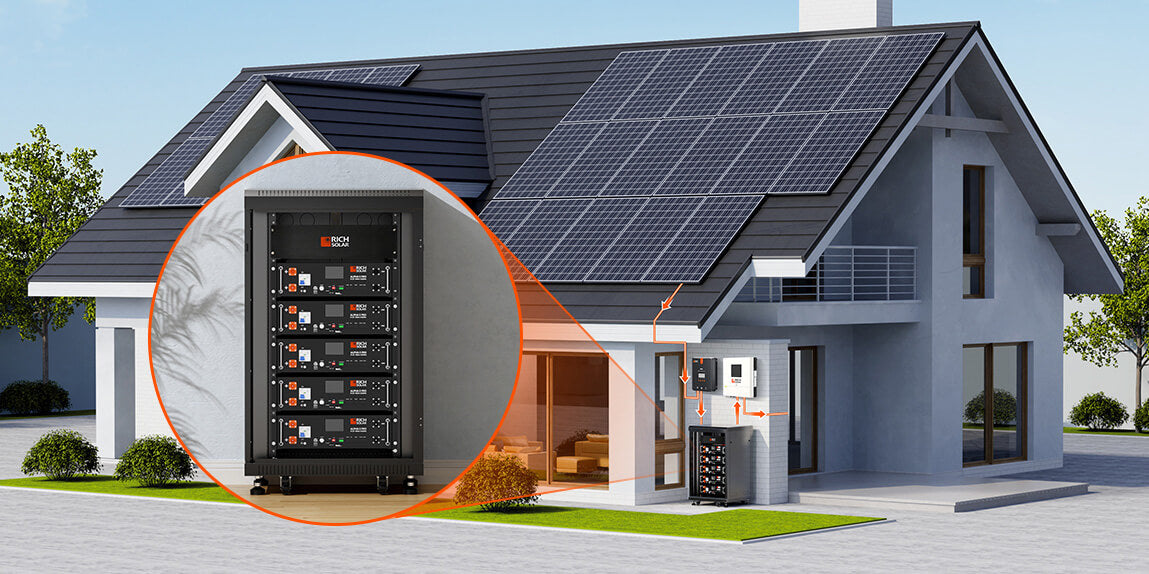Solar batteries are critical components of any solar power system because they store and supply energy, ensuring power is available even when the sun isn’t shining. While solar batteries offer excellent performance, there are key considerations that can help consumers maximize their investment. Understanding these factors will ensure that your solar battery system operates at its best and provides long-lasting, reliable energy.
Common Solar Battery Issues
Solar battery systems are vital for energy storage, but they can face several challenges that may affect their performance. Identifying and addressing these common issues is crucial for maintaining efficiency and extending battery life. Below are some of the most frequent problems encountered with solar batteries, along with tips on how to prevent or manage them.
Overcharging
Overcharging is a common issue in solar systems, occurring when a battery receives more energy than it can store. This often results from a malfunction in the battery management system (BMS) or improper configuration. The excess energy leads to problems like overheating, gassing, and a shortened battery lifespan. Typical signs include battery swelling, reduced capacity, and even leakage.
To prevent overcharging, using high-quality solar charge controllers that automatically regulate the charging process based on the battery’s status is essential. Additionally, regularly checking and calibrating the BMS ensures that it continues to function optimally.
Undercharging
When a battery receives too little energy, it undercharges, often due to insufficient solar input, poor solar panel performance, or an improper charging setup. Undercharged batteries can lead to reduced functionality, shorter lifespan, voltage drops, and energy shortages, ultimately affecting your power supply and system efficiency.
To prevent undercharging, regularly monitor your solar panel system's output and ensure it meets your household or business's energy requirements. Cleaning the panels and positioning them for optimal sunlight exposure can improve performance. Additionally, consider integrating a larger battery bank or upgrading to more efficient panels to better capture energy, especially during cloudy or low-sun days. In regions prone to low sunlight, a backup power source, such as a generator or hybrid inverter, can provide supplemental energy to keep your system running smoothly.
Capacity Loss Over Time
All batteries undergo a natural aging process, which includes a gradual loss of capacity. Repeated charge and discharge cycles can exacerbate this issue, reducing the effective storage capacity over time. Users may notice their batteries aren't holding a charge as well as they used to, which can be frustrating, especially for those relying on solar energy for critical needs.
Capacity loss can be mitigated by selecting high-quality batteries designed for longevity. Lithium-ion batteries, for example, tend to have longer life spans compared to traditional lead-acid batteries. Proper maintenance and following manufacturer guidelines for charging cycles can also help prolong battery life.
Voltage Imbalance
For systems with batteries connected in series, voltage imbalances can develop over time. This occurs when some batteries are charged and discharged more than others, leading to uneven performance. An imbalance can reduce the efficiency of the entire system and lead to premature failure of the weaker batteries.
To address voltage imbalances, it’s critical to routinely monitor each battery's voltage levels. A BMS can help control these levels and guarantee that all batteries are charged and discharged equally. Balancing chargers can also be used to evenly distribute charge levels among batteries.
Sulfation (for Lead-Acid Batteries)

Sulfation is a common issue in lead-acid batteries where lead sulfate crystals build up on the battery plates during discharge and do not dissolve during charging. This process can hinder the battery’s ability to hold a charge, significantly affecting performance. Regular cycling and maintenance can help mitigate sulfation, but once it occurs, recovery can be challenging.
To prevent sulfation, it’s crucial to keep lead-acid batteries fully charged whenever possible. Using a smart charger that can regularly pulse charge the battery can help maintain its health and prevent sulfation from taking hold.
High Temperatures
Excessive heat can be detrimental to solar batteries, causing damage and reducing efficiency. Batteries should be kept in a temperature-controlled environment, as prolonged exposure to high temperatures can lead to decreased performance, reduced lifespan, and safety hazards such as thermal runaway.
Implementing proper cooling strategies, such as ventilation and insulation, can help keep battery temperatures within an optimal range. Additionally, placing batteries in shaded or cooler areas can minimize heat exposure.
Poor Maintenance Practices
Neglecting regular maintenance is a surefire way to encounter battery issues. Without routine checks on battery terminals, voltage tests (for lithium batteries), and overall system health, users may experience poor performance and unexpected failures. Regular maintenance can prevent many common issues from arising.
Creating a maintenance schedule that includes periodic checks can help users stay proactive. This schedule should include cleaning battery terminals, checking for corrosion, and ensuring all connections are secure and in good condition.
How to Prevent Common Issues

Consistent monitoring and maintenance are key to optimizing solar battery performance. Using tools like battery monitors, a BMS, and cooling systems helps ensure longevity, efficiency, and safe operation for your solar power system.
Use a High-Quality Battery Monitor
A reliable battery monitor can be invaluable in maintaining solar battery health. It helps users track charge levels, preventing both overcharging and undercharging by providing real-time data. Investing in a quality monitor ensures users can take proactive steps to protect their investment.
Invest in a Battery Management System (BMS)
Adding a BMS can significantly enhance battery performance. A BMS helps prevent voltage imbalances and ensures that each battery in a series is charged appropriately, thus prolonging its lifespan and optimizing overall system efficiency.
Modern BMSs’ are equipped with advanced features like temperature monitoring, fault detection, and real-time analytics, giving users a comprehensive view of their battery's health and performance. Temperature monitoring helps prevent overheating, which can lead to battery degradation, while fault detection ensures that potential issues, such as wiring faults or system malfunctions, are identified and addressed early on.
Real-time analytics provide valuable insights into energy usage patterns, charge levels, and overall efficiency, allowing users to make informed decisions about optimizing their solar energy systems. These tools not only enhance safety and reliability but also extend the lifespan of the battery by ensuring it operates within optimal conditions at all times.
Choose the Right Solar Battery for Your Needs
Selecting the appropriate type of solar battery is crucial for ensuring long-term performance. Lithium-ion batteries are known for their efficiency and longevity, while lead-acid batteries are typically more affordable but may require more maintenance.
Assessing your energy needs and system requirements can guide buyers in making the right choice. When choosing a battery, consider factors like your energy consumption patterns, budget, and installation space. A well-matched battery can significantly enhance the overall efficiency of your solar power system.
Keep Your Batteries Cool and Well-Ventilated
To protect solar batteries from heat damage, it’s essential to maintain a cool and well-ventilated environment. Cooling fans, heat sinks, and insulated enclosures can help reduce the risk of overheating and keep your batteries operating within their recommended temperature ranges. Consider investing in battery enclosures or cooling accessories designed to help regulate temperature and provide adequate ventilation for your solar batteries.
Regularly Check and Maintain Batteries
Routine maintenance is key to battery longevity. Encourage users to regularly check battery terminals for corrosion, monitor voltage levels, and maintain electrolyte levels in lead-acid batteries. Useful maintenance tools can help users keep their batteries in optimal condition.
Setting reminders for routine maintenance checks can help users stay on track, ensuring their solar batteries perform at their best over time.

When selecting a solar battery, consider capacity, lifetime, and durability. Choosing a high-quality solar battery is critical for achieving long-term performance and reliability. RICH SOLAR offers a variety of solar batteries that are excellent for off-grid, RV, and home applications, delivering stable energy storage options.
Recognizing the main faults with solar batteries and how to correct and prevent them will dramatically improve the dependability and performance of your solar power system. Users can benefit from solar energy without the frustration of battery-related issues by applying best practices and using high-quality items.

